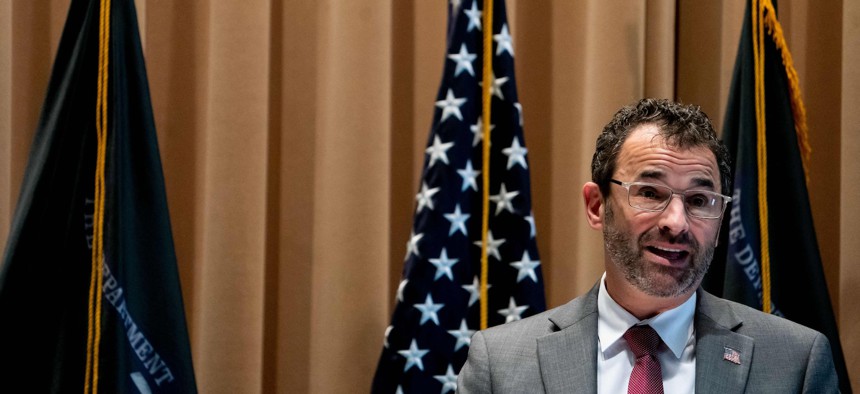IRS has some of the oldest tech in government — it’s trying to change that

IRS Commissioner Danny Werfel, shown here briefing reporters in November 2023, says modernizing IRS tech is a "generational imperative" STEFANI REYNOLDS/AFP via Getty Images
Agency leadership views the “historic funding” provided under the Inflation Reduction Act as an opportunity to get out from under the list of needed tech improvements that have long plagued the IRS.
One year into his tenure as commissioner of the IRS, Danny Werfel says that the digital transformation of the tax agency is a “generational imperative.”
“With historic funding through the [Inflation Reduction Act], we’re building an IRS where all taxpayers can meet all their responsibilities, including all interactions with the IRS — from questions to payments to resolutions — in a completely digital manner if they choose,” he said during a speech at American University on Monday. “It’s how most taxpayers want to interact with us in the 21st century.”
The IRS has roughly $60 billion in funding under that law, passed in 2022, to spend over a decade. Originally, the IRS had received an additional $20 billion under the IRA, but that was chipped away as part of a debt ceiling deal between the White House and Congress last year. The agency has seen its budget decline over the last decade and is asking for additional funding to make up for that loss of IRA funding in its 2025 budget request.
Although the IRS has seen some progress with tech work already — deploying artificial intelligence to identify complicated tax evasion schemes, hitting digitization goals ahead of schedule and piloting Direct File — more work remains.
“This vision where taxpayers around the nation can just go online and get everything done — there is a lot of data that needs to be cleaned; technology that needs to be cleaned up; process that needs to be re-engineered. Behind the scenes at the IRS, the technology is old,” said Werfel. “There’s just a ton of work that needs to be done.”
That ongoing, behind-the-scenes work on the core data and legacy IT infrastructure at the agency remains foundational to most IRS goals under the IRA.
The agency’s strategic operating plan for that funding has 42 initiatives, and “the successful delivery of most… is directly contingent on the IRS timely completing its modernization of its core information technology structure,” the Treasury Inspector General for Tax Administration wrote in a recent report.
By TIGTA’s count, 83% of those initiatives are dependent on tech improvements, which are in turn dependent on the IRS getting adequate annual appropriations for day-to-day operations so that IRA funding can be reserved for transformation work.
IRS data, which is stored across different legacy systems and not widely accessible to agency staff, will also be critical, according to TIGTA. Last year, the IRS hit planned milestones to set up metadata standards and inventory assets to support the migration of data to the IRS Enterprise Data Platform, which is meant to eventually serve as a central access point.
A recent Government Accountability Office report dinged the agency for a lack of detailed planning to support its tech objectives, although the watchdog did note that the IRS completed almost all of the modernization activities it had planned to do during fiscal 2022 and 2023.
The IRS also houses some of the oldest IT systems in the federal government, including the 60-year old Individual Master File, the authoritative data source for individual tax account data that the IRS has been trying to replace since at least 2009. Former IRS commissioners have said underfunding has hampered that and other modernization efforts at the agency.
Currently, the IRS strategic operating plan has the retirement of the IMF scheduled for fiscal 2028.
Asked why IRS efforts to modernize the IMF hadn’t been successful thus far and what might make now different, Werfel pointed to new leadership — the IRS got a new chief information officer late last year — in addition to new approaches, including a move to agile that prioritizes “specific, concrete taxpayer outcomes.”
“So rather than the goal being cloud enabled, new software language, more streamlined architecture versus messy architecture — which had been historically our goals — our goals are now what functionality needs to go into the individual online account by next filing season?” he told reporters after the Monday event.






